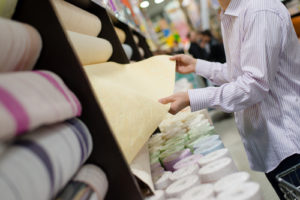
Cloth Production Guide
Seeing and getting to know the whole process of production of apparels is often beneficial to understand about the whole process and also to set your expectations right. It allows you in building a good relationship with clothing manufacturers. Each design starts with a sketch followed by a garment tech pack or CAD drawing – used to simplify the process.
Here are a few steps involved in the making of clothes that can be helpful for you to learn more about manufacturing clothes.
Digital Patterns
Today, sewing patterns are saved in files than on paper. Most patternmaking specialists take the patterns and place them on large boards which are often called digitizers. This allows them to input the patterns into their system, so that they can use the software they are comfortable with, for designing.
Sorting the Patterns after Digitizing
Working with digital patterns makes it easy for the pattern maker specialists to make changes with the most precision. All adjustments of measurements can be tracked and visualized in real-time. Also, the same set of patterns could be used for grading to other sizes after the approval of product samples. Size grading is often done using the same software which is used for digitizing the patterns.
Lay Plan
Printing the patterns on a plotter is the step that follows after sorting. For this, a proper lay-plan needed to be prepared by a factory specialist which includes laying all the pattern blocks out. Things are done after taking a lot of factors like length of fabric, the width of the roll, the total number of items to be purchased, etc. into consideration.
Cutting the Fabric
As the process of cutting begin, it could be noted that the first part of the process would be done manually using scissors which would then be led to trimming of finer bits using special equipment. Similar types of fabric articles would be layered one on top of the other and cut in bulk.
Making Sets for Seamstresses
After completing the cutting process, all the cut pieces will be put together into sets. Operations of a similar kind are often grouped to optimize production, making it easy for people to pick up speed by doing the same thing again – this helps in saving the time gradually.
Colors and Trims
It is important to choose the right color of threads that match the fabric color during the production stage. You would be faced with many opinions during this.
Adjusting the Machinery
Every machine used for sewing has to be adjusted for particular types of fabrics. Reels of threads could be placed in the flatlock sewing machine. The seam can then be tested on any piece of fabric to make sure that the tension is adjusted correctly.

